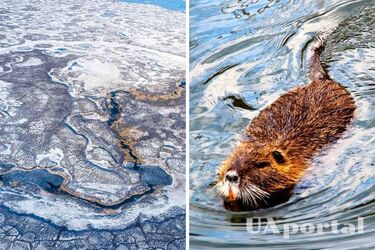In Alaska, beavers cause permafrost to melt and release greenhouse gases: scientists

According to a study published in the journal Environmental Research Letters, beaver dams in Alaska are leading to flooding of surrounding lands and the destruction of permafrost, which can cause the release of greenhouse gases.
Read also: Scientists have developed a robot that taught birds to sing (video)
American beavers (Castor canadensis), which have inhabited the Arctic tundra in recent decades, create dams that lead to flooding of local areas and melting of permafrost. This process contributes to the release of organic carbon in the form of greenhouse gases such as carbon dioxide and methane. Increased emissions of these gases can lead to further climate warming, especially in the Arctic, where changes are occurring faster than in other regions of the planet.
Researchers from the University of Alaska Fairbanks analyzed an area of northwestern Alaska using an infrared spectrometer to study the relationship between beaver ponds and methane emissions. The study showed that there were significantly more methane emission sites in the area of beaver ponds, which were located up to 60 meters away from the ponds. In addition, 51% more methane sites were found around beaver ponds compared to ponds without beavers.
These results suggest that flooding caused by beaver activity is leading to even more permafrost melting. As the animals continue to spread across the Arctic, this could significantly alter the carbon cycle of this vulnerable area.
As a reminder, scientists have answered which asteroids could destroy the Earth and when it could happen.
If you want to get the latest news about the war and events in Ukraine, subscribe to our Telegram channel!
